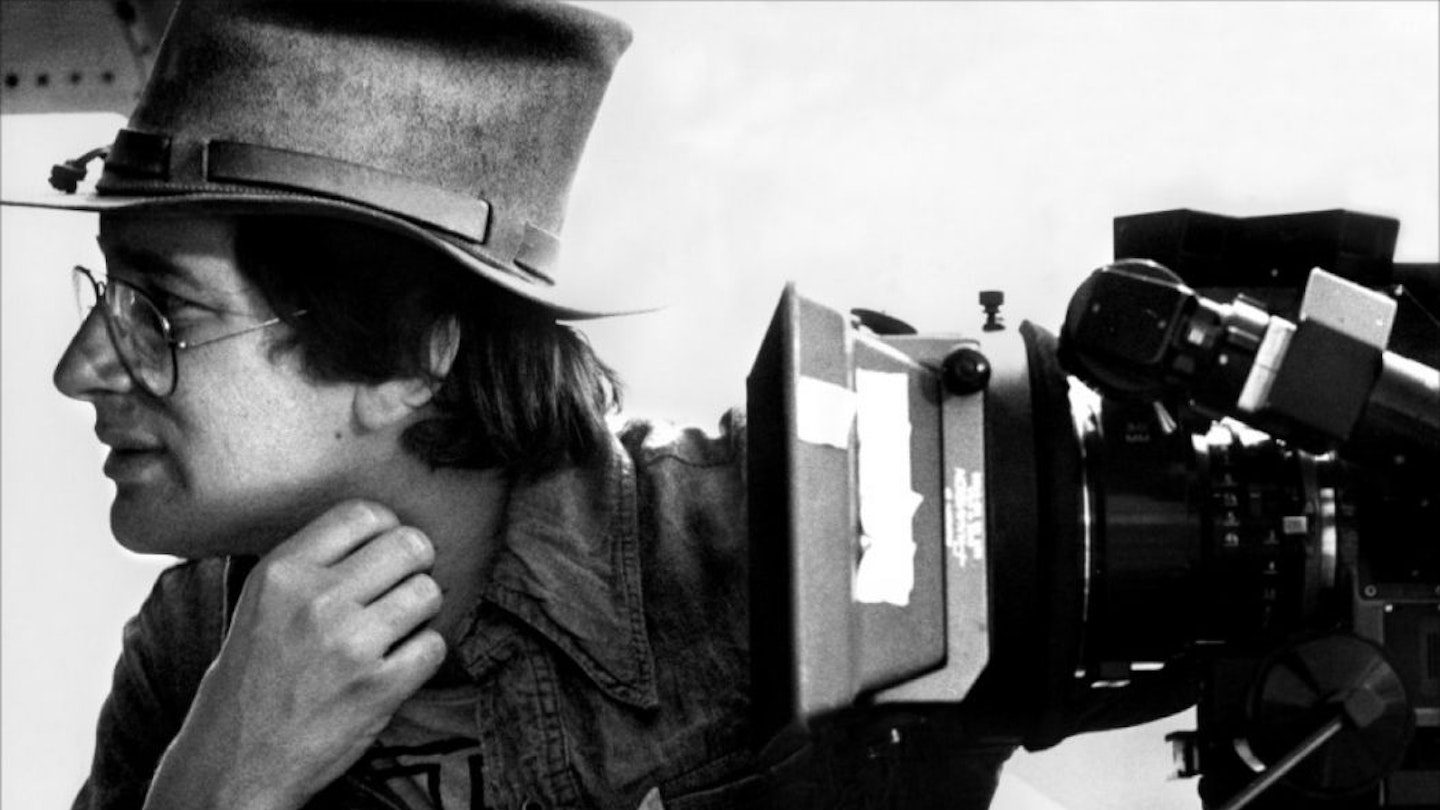Filmmaking great, master storyteller, wearer of baseball caps, lest we forget (which we really don’t), once-editor of Empire, Steven Spielberg has long since earned his place in the movie pantheon. As a collection of his finest cuts arrives in the shape of a new Blu-ray box set, this gallery of behind-the-scenes shots showcases the man in action on sets from Martha’s Vineyard (Jaws) to Sri Lanka (The Temple Of Doom), via Jurassic Park and the Lost City of Petra.
Duel (1971)
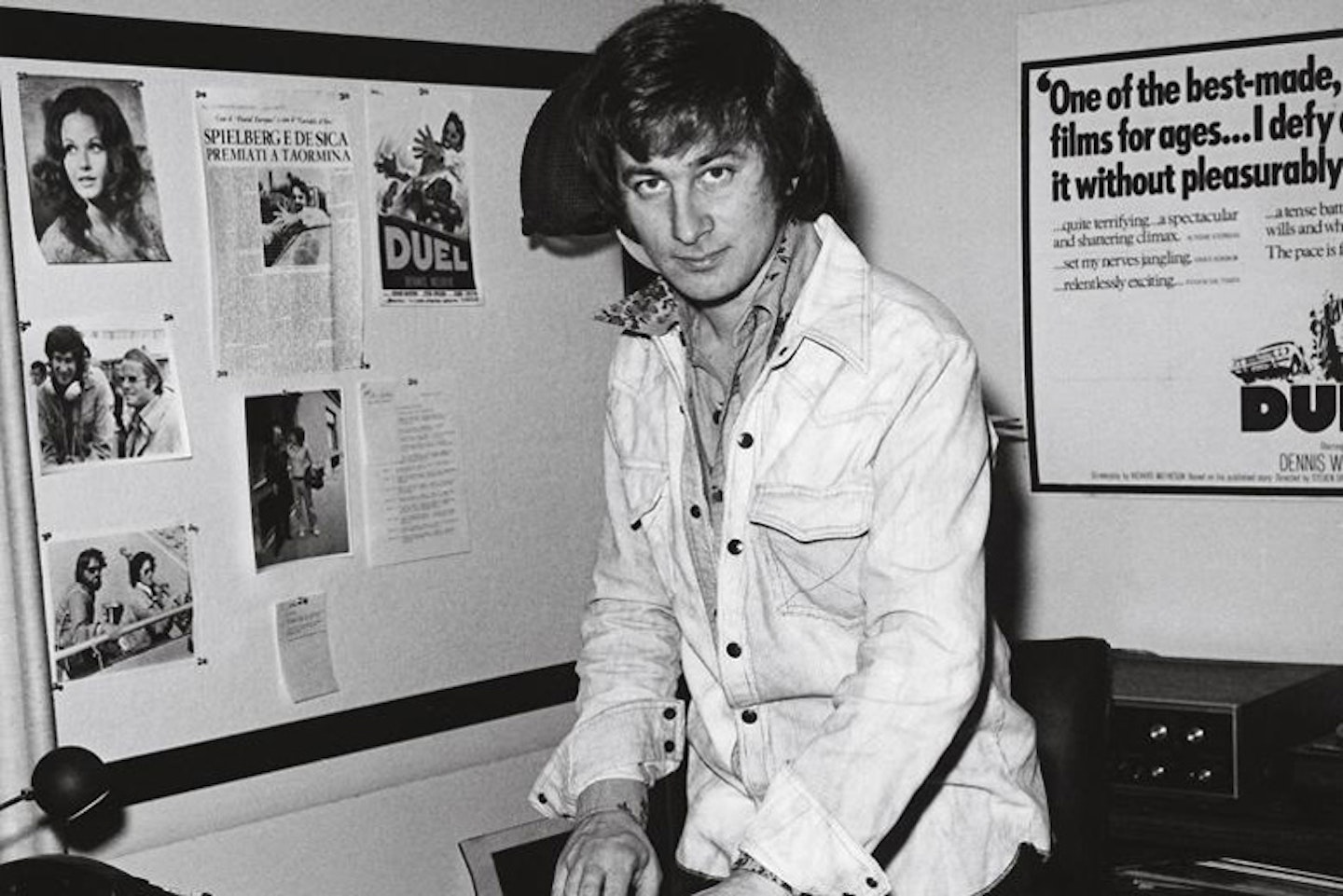
Shot in a pedal-to-the-metal 13 days along California’s Highway 14 and based on a short story by Richard ‘I Am Legend’ Matheson, Duel was an early showcase for Spielberg’s command of tension, pacing and Everyman-in-peril character beats. It’s an early template for Jaws with Dennis Weaver in the frazzled Hooper role as a man faced with a foe as anonymous as it is implacable. “I determined very early on,” Spielberg reflected, “that everything about the film would be a complete disruption of our whole technological society.”
The Sugarland Express (1974)
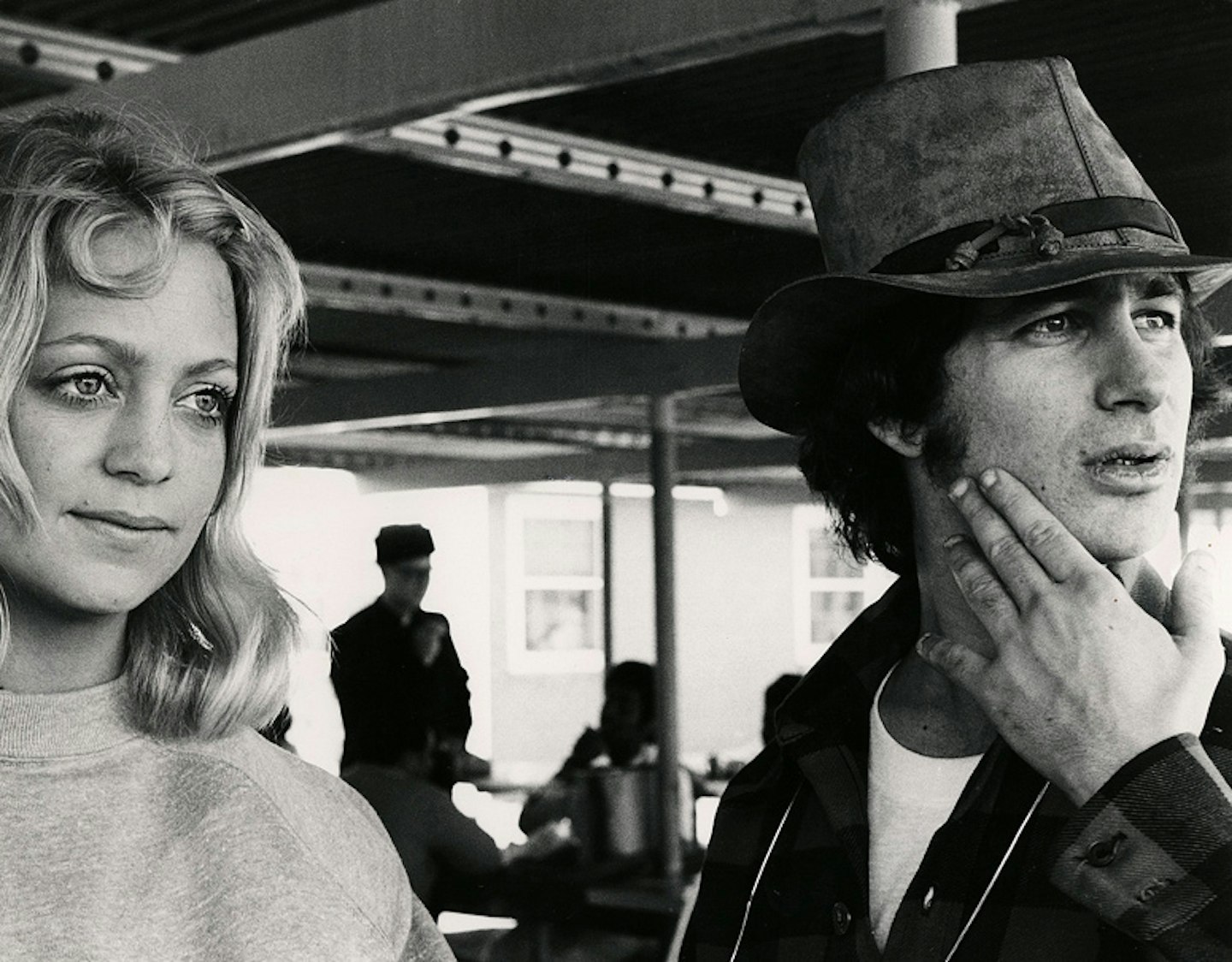
Steven Spielberg and Goldie Hawn have a director-star moment on the set of The Sugarland Express. Hawn’s casting was originally the suggestion of producer Richard Zanuck. Universal had the actress, still hot from her Oscar success with Cactus Flower, under contract and Spielberg paired her with William Atherton, the future Walter Peck, as the on-the-lam Poplins.
Jaws (1975)

Spielberg (here with shark victim number 1, Susan Backlinie) spent much of Jaws’ shoot in a wetsuit. “I'm not really an ocean lover,” he revealed to the press at the time. “I've always been a little afraid of the ocean.” With a fraught shoot that has since become movie lore, the filming process would do nothing for that thalassophobia. But in this scene it was Backlinie feeling the fear: the actress was yanked about like a human doll in a harness to capture the ferocity of the shark attack.
Close Encounters Of The Third Kind (1977)
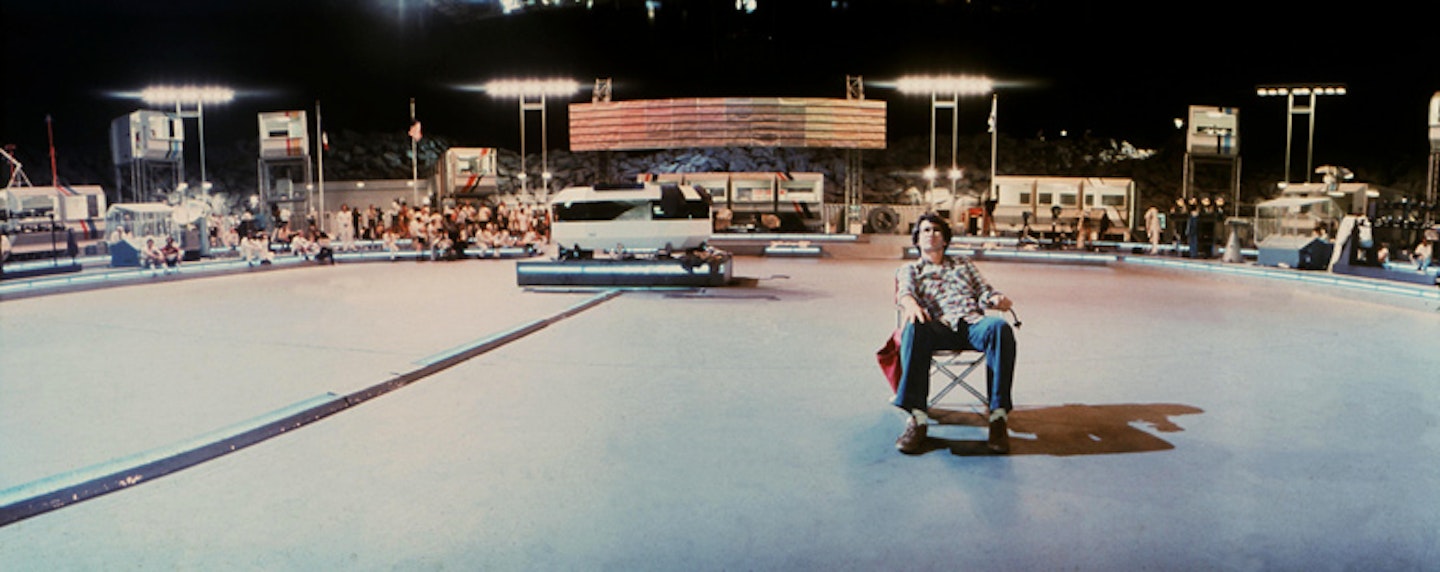
Steven Spielberg cuts a solitary figure in the cavernous World War II hanger in Mobile, Alabama he used to house the alien craft. Chastened by Jaws’ chaotic shot where the elements played havoc in the great outdoors, the director discovered that bad weather can strike in the great indoors too. The hanger was so enormous that humidity led to clouds and drizzle inside the building.
Check out Empire's review of Close Encounters Of The Third Kind here
Close Encounters Of The Third Kind (1977)
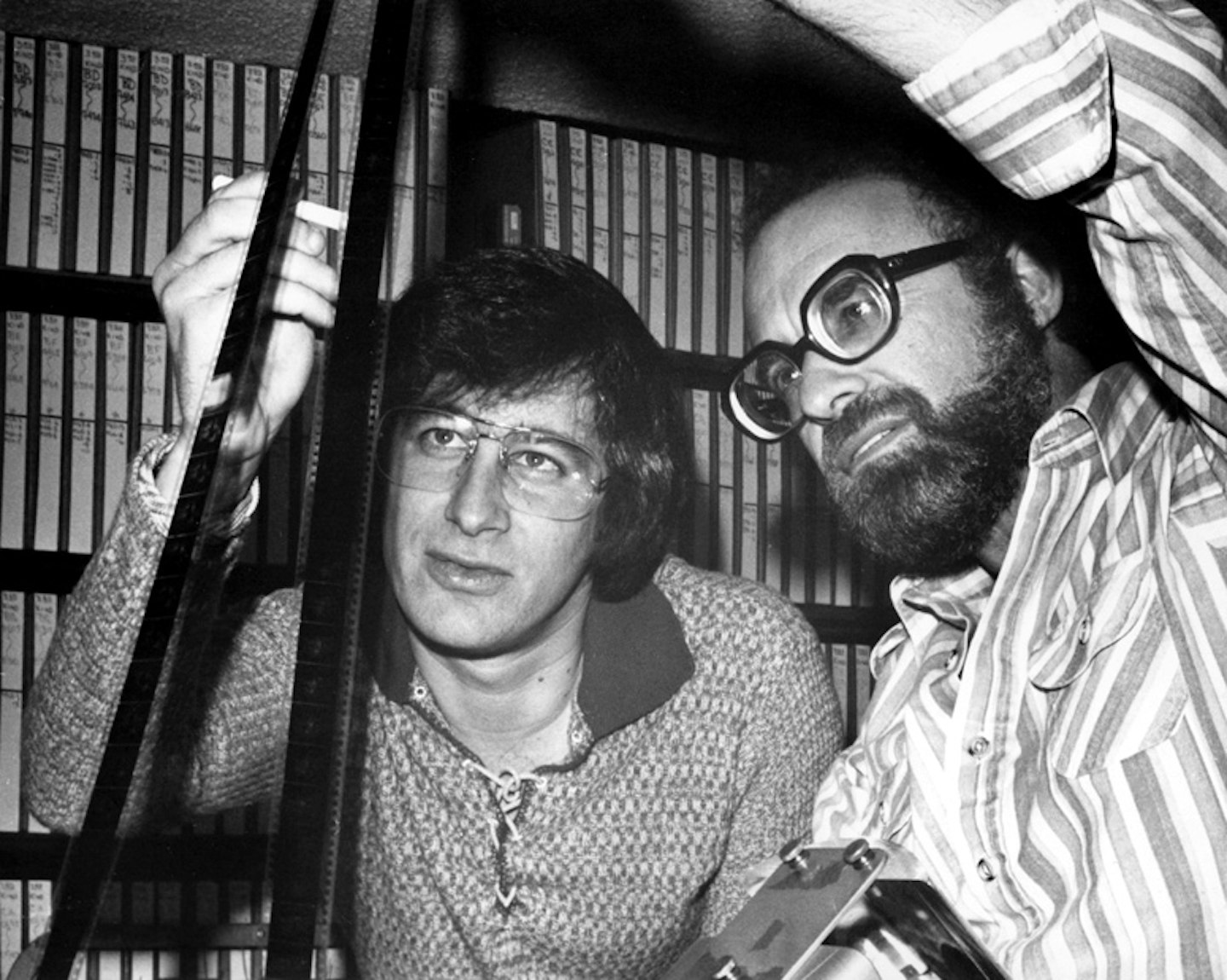
Close Encounters paired up Spielberg with his long-time editor Michael Kahn, the first of 24 collaborations to date. Kahn’s three Oscars have all come on Spielberg movies (Raiders Of The Lost Ark, Schindler’s List and Saving Private Ryan). “Steven is very specific about what he'd like to see,” Kahn told the American Cinema Editors, “but then you have to not only do what he says, you have to do what you think he feels, what he really means.”
Check out Empire's review of Close Encounters Of The Third Kind here
Raiders Of The Lost Ark (1981)
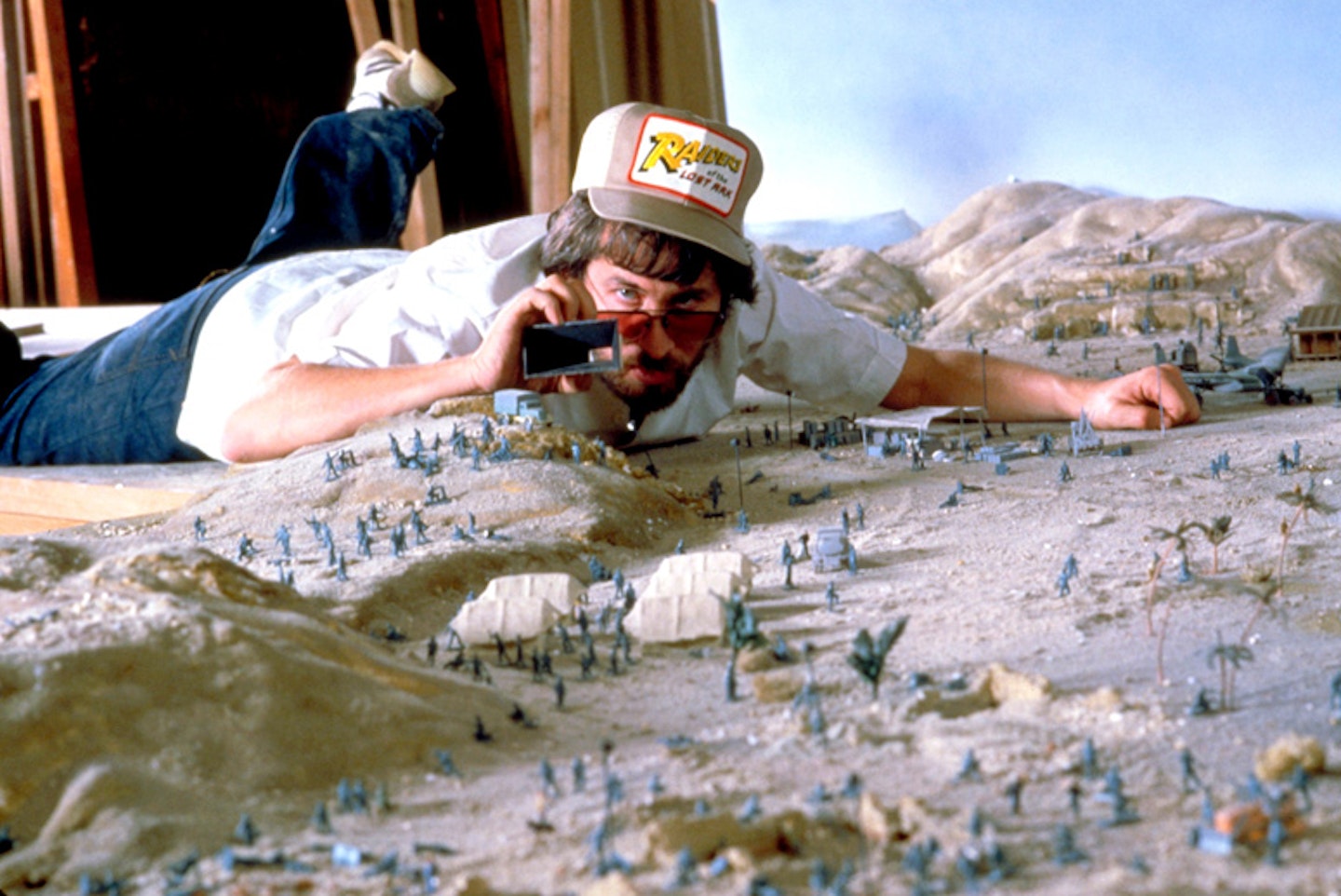
“It needs to be at least three times bigger than this.” Steven Spielberg meticulously plans the Derek Zoolander version of the Tanis sequences in Raiders Of The Lost Ark. The matinée movie’s hero was originally called ‘Smith’ before Spielberg and George Lucas decided that “Indiana Smith, I always knew some day you'd come walking back through my door,” sounded a bit crap and made him Dr. Jones instead.
E.T. The Extra-Terrestrial (1982)
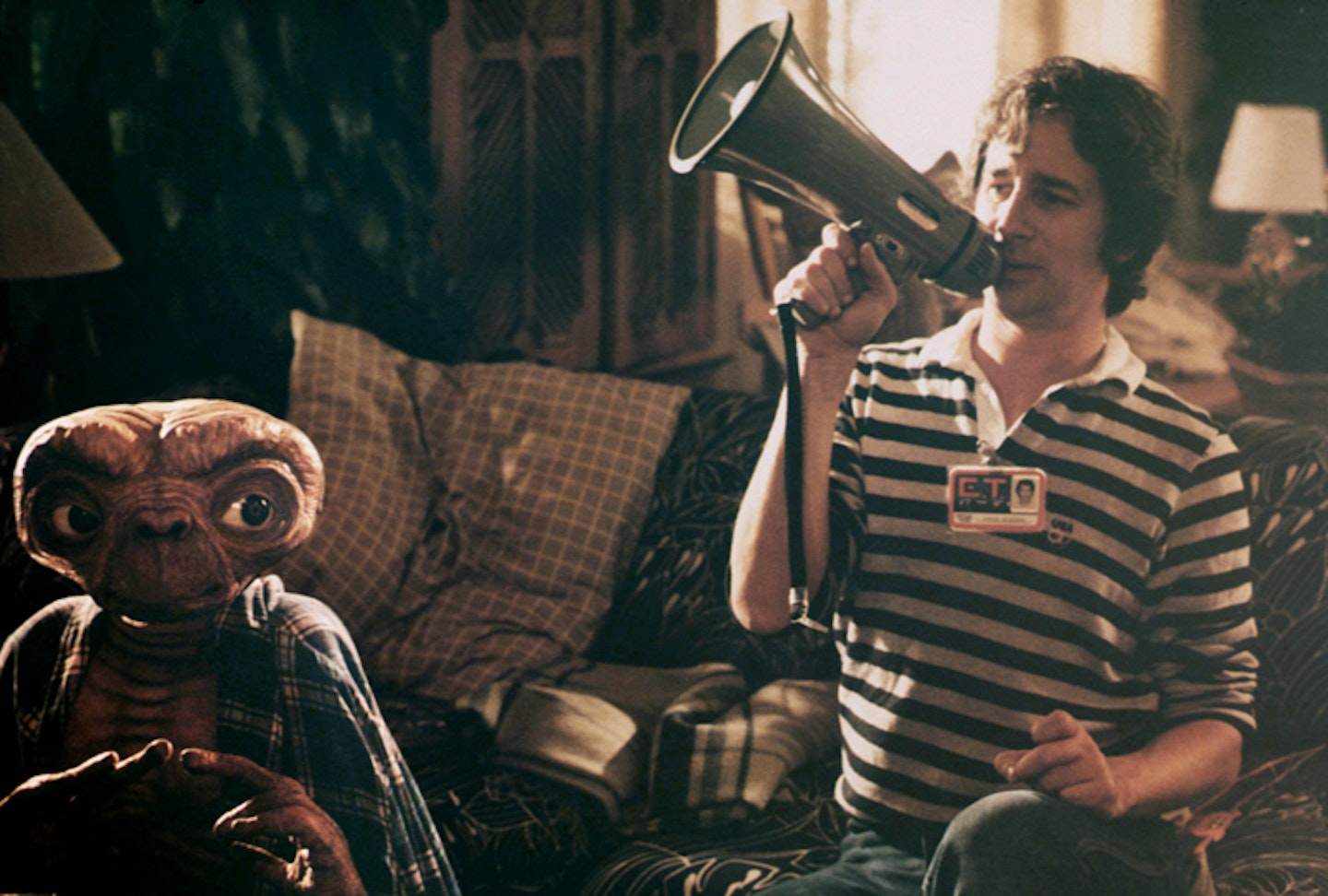
This early, personal, achingly poignant one was channelled through the prism of Steven Spielberg’s difficult childhood. “I’m not into psychoanalysis,” he explained during the film’s pre-release press, “but E.T. is a film that was inside me for many years and could only come out after a lot of suburban psychodrama.” He worked tirelessly with his cinematographer Allen Daviau to bring the sock-strewn treasure trove of Elliott’s bedroom to life, drawing on the paintings of Maxfield Parrish (the main inspiration for DreamWorks’ boy-with-fishing-rod logo) to add magic to the boy’s inner sanctum.
Check out Empire's review of E.T. The Extra-Terrestrial here
Indiana Jones And The Temple Of Doom (1984)
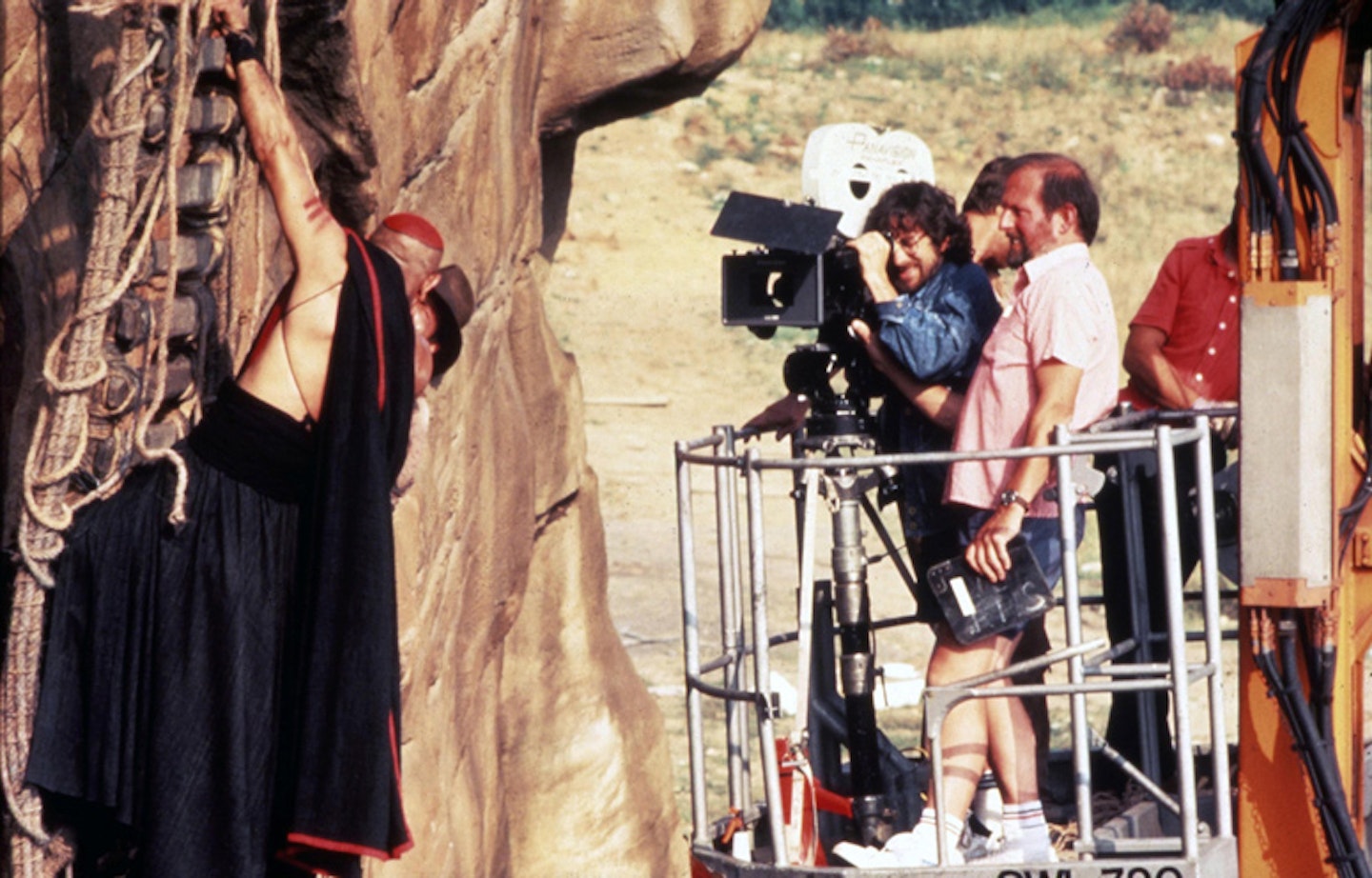
Steven Spielberg oversees the final few moments of Mola Ram’s Thuggee life from his camera gantry in Indy II. Indiana Jones And The Temple Of Death, as it was originally titled, had its cliffhanger ending filmed in Northern California, while the crocodiles in the water below were actually in Florida. Indian star Amrish Puri, picked by the director to play the Thuggee priest, kept his head shaved after the movie and became a go-to Bollywood bad guy.
Check out Empire's review of Indiana Jones And The Temple Of Doom here
Empire Of The Sun (1987)
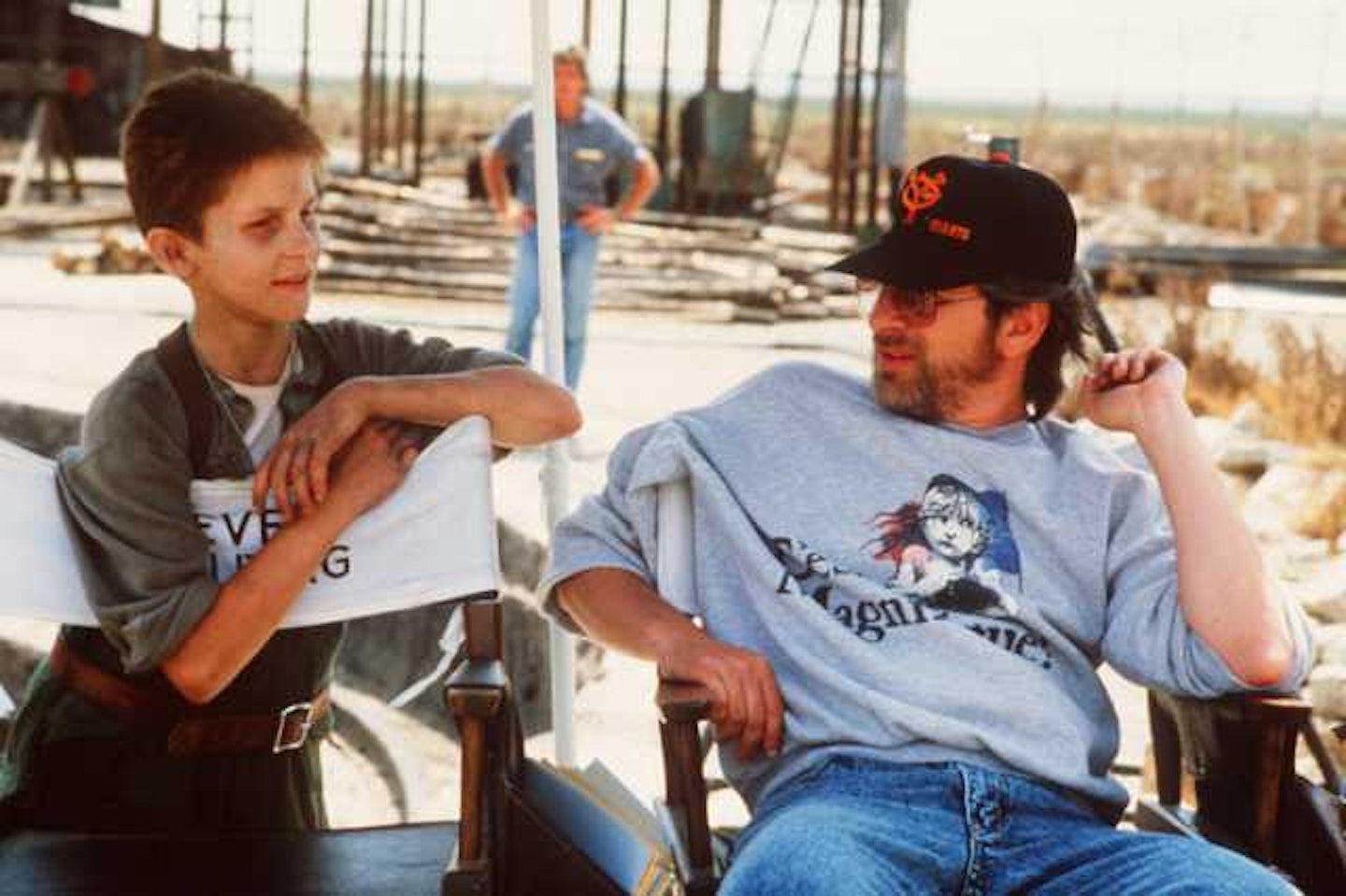
Steven Spielberg’s other 1941 movie was adapted from J. G. Ballard’s bildungsroman based on the writer’s childhood years in a Japanese internment camp near Shanghai. He picked Batman-to-be Christian Bale from 4000 kids during a nine-month auditioning process and forged a strong bond with the 13 year-old actor on set. The Shanghai sequences were filmed in the city itself over 21 days after much wrangling with the Chinese authorities, before relocating to Spain (pictured) for the prison camp section.
Indiana Jones And The Last Crusade (1989)
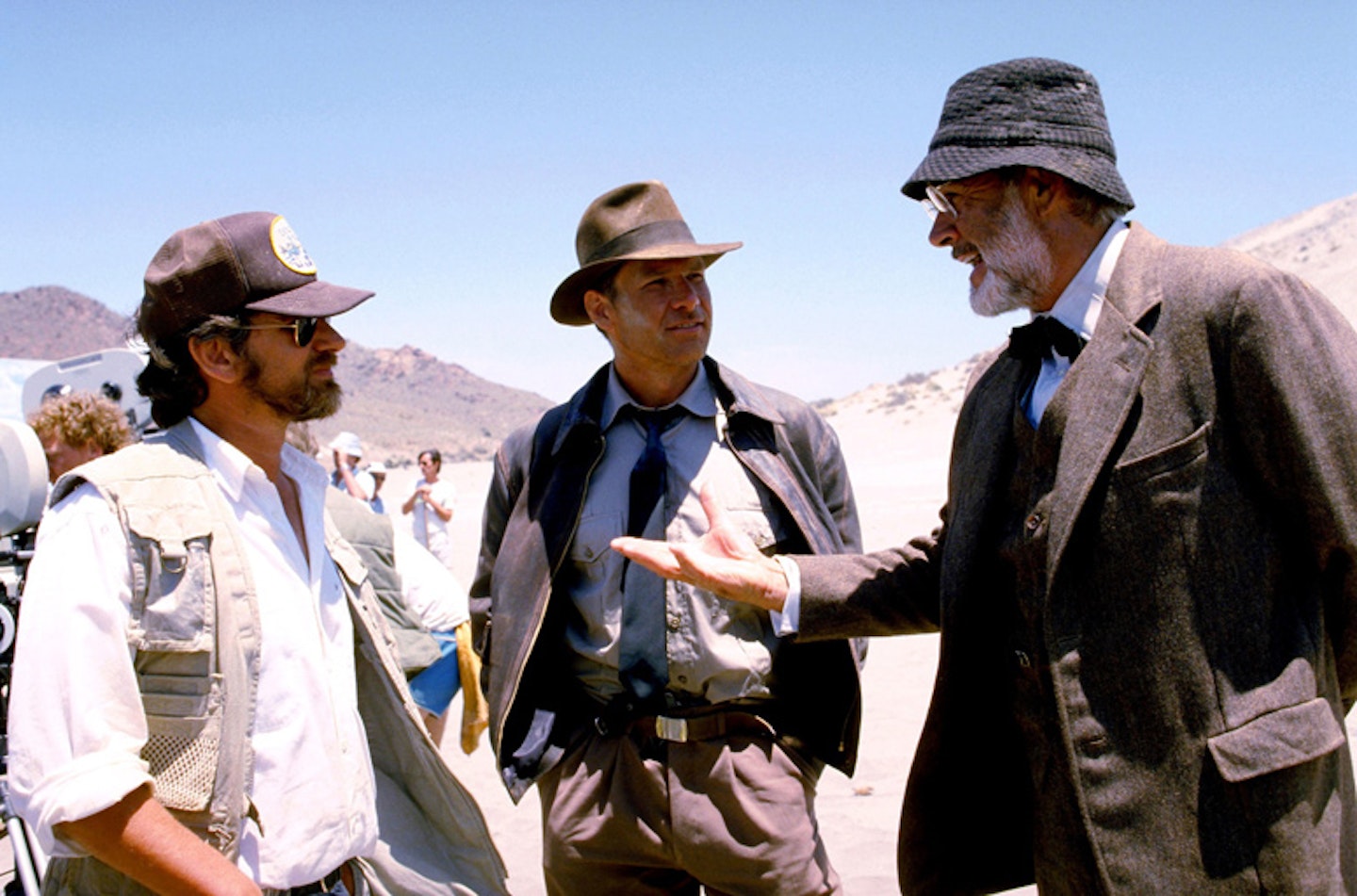
Here Steven Spielberg keeps up with the Joneses on location during The Last Crusade; a movie that starts in one desert (Monument Valley) and eventually leads to another (Desierto de Tabernas, Spain). A five-year hiatus between Temple Of Doom and Last Crusade came with Spielberg toggling through story ideas, including the Holy Grail device he eventually embraced. “I always associated it with Monty Python,” explained the director of his initial reluctance. “I came up with the father-son story because the Grail is symbolic in finding the truth in one’s life.”
Check out Empire's review of Indiana Jones And The Last Crusade here
Jurassic Park (1993)
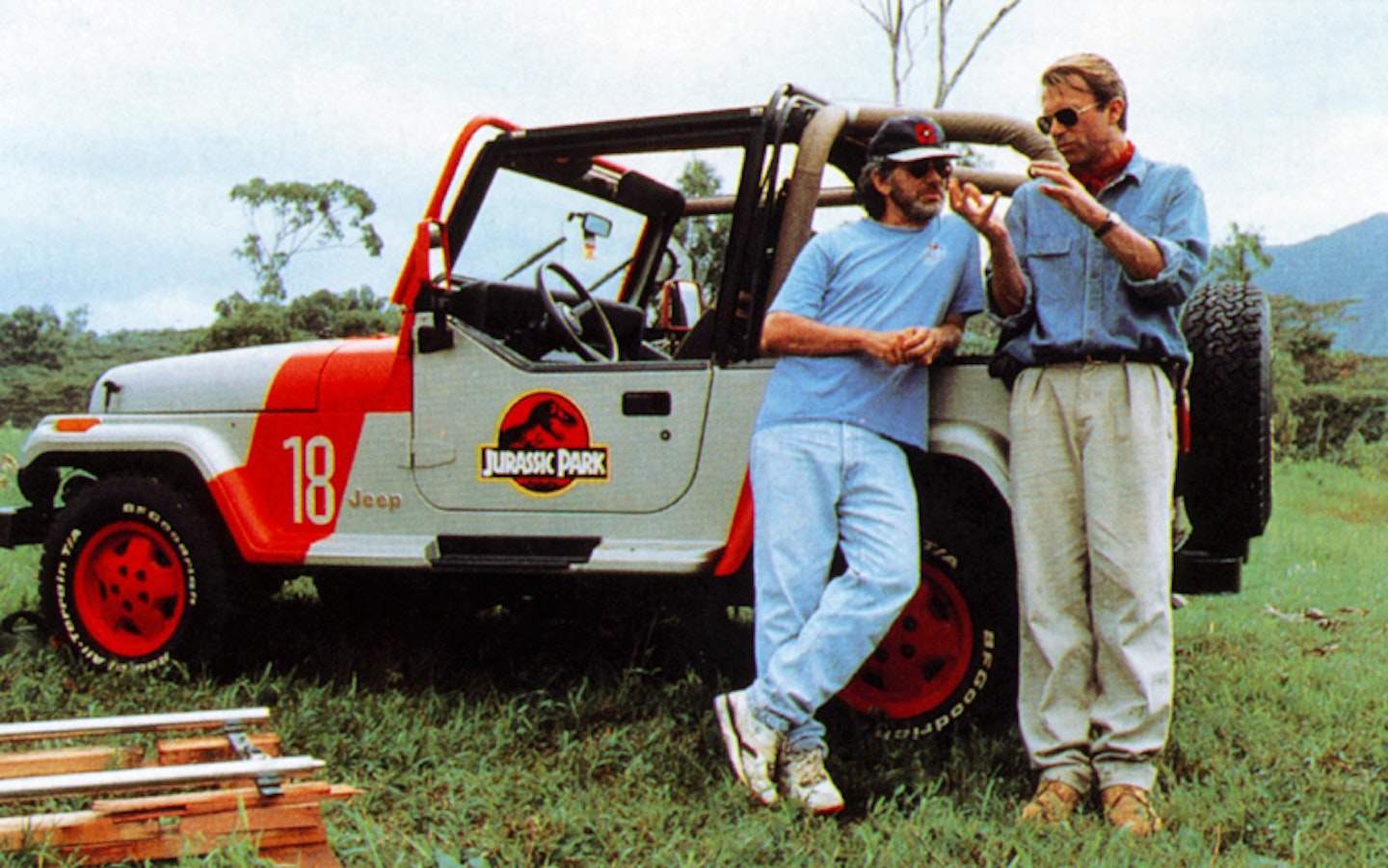
Steven Spielberg shoots the breeze with Sam Neill, one of the human stars in a film where the main attractions were 65 million years old. Spielberg wasn’t the only director who had designs on adapting Michael Crichton’s novel: Roland Emmerich, Joe Dante and Tim Burton, among others, made a play for the rights. Crichton’s pre-existing relationship with Spielberg from their collaboration on ER counted for little in a $1.5m bidding war, but Spielberg came up trumps. “I was really just trying to make a good sequel to Jaws,” he remembers of its appeal, “on land.”
Schindler’s List (1993)
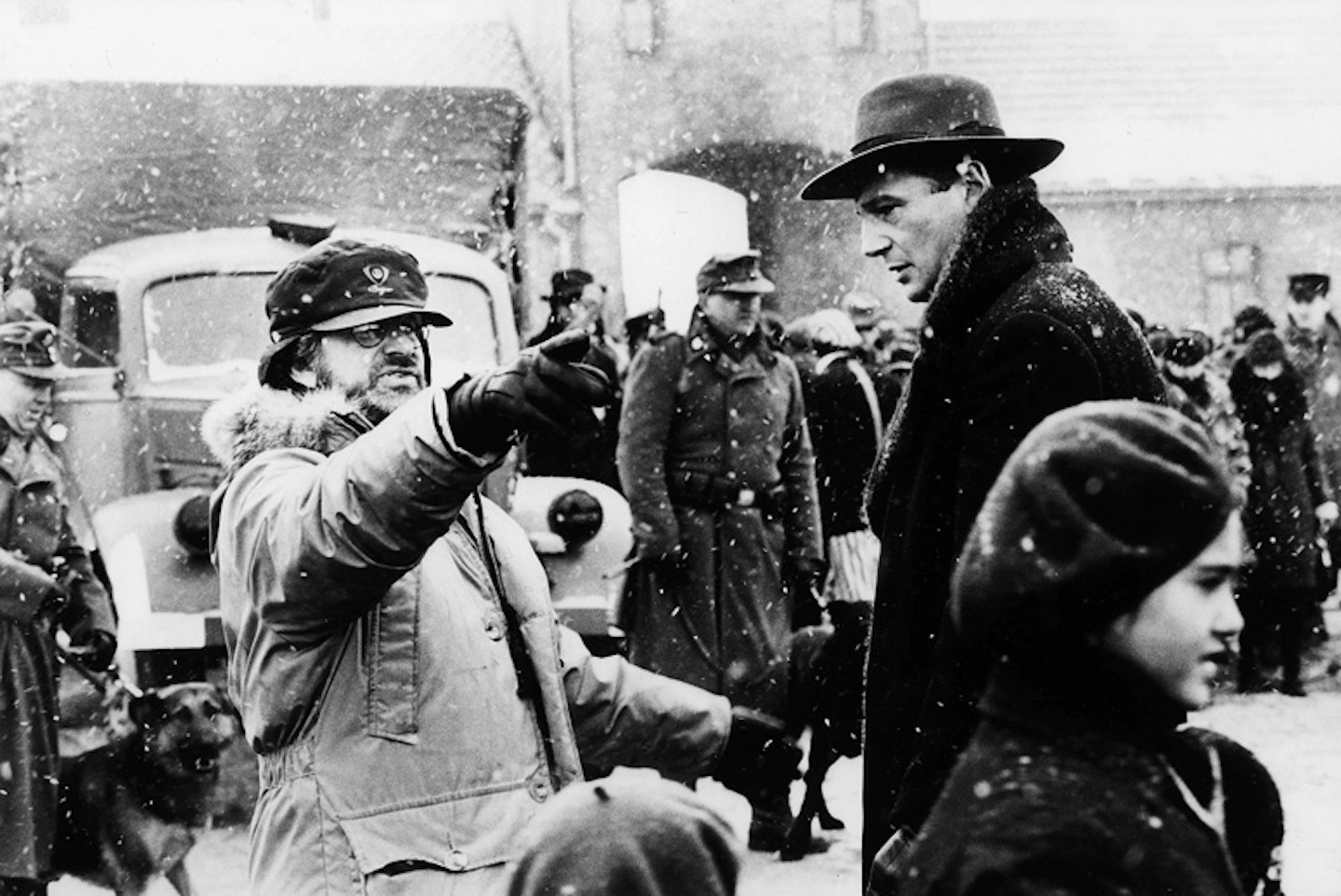
This on-set snap of Spielberg and his Oskar Schindler, Liam Neeson, captures the bleakness of March 1993 in Krakow. The shoot revisited many of the actual locations Schindler’s List was depicting, including Schindler’s actual factory and the real SS headquarters, and complemented the 148 sets constructed by Polish production designer Allan Starski. For Spielberg, the shoot was a difficult experience. “The worse days came any time I had to have people take their clothes off and be humiliated and reduce themselves down to livestock,” he recalled. “It was the worst experience of my life.”
Jurassic Park: The Lost World (1997)
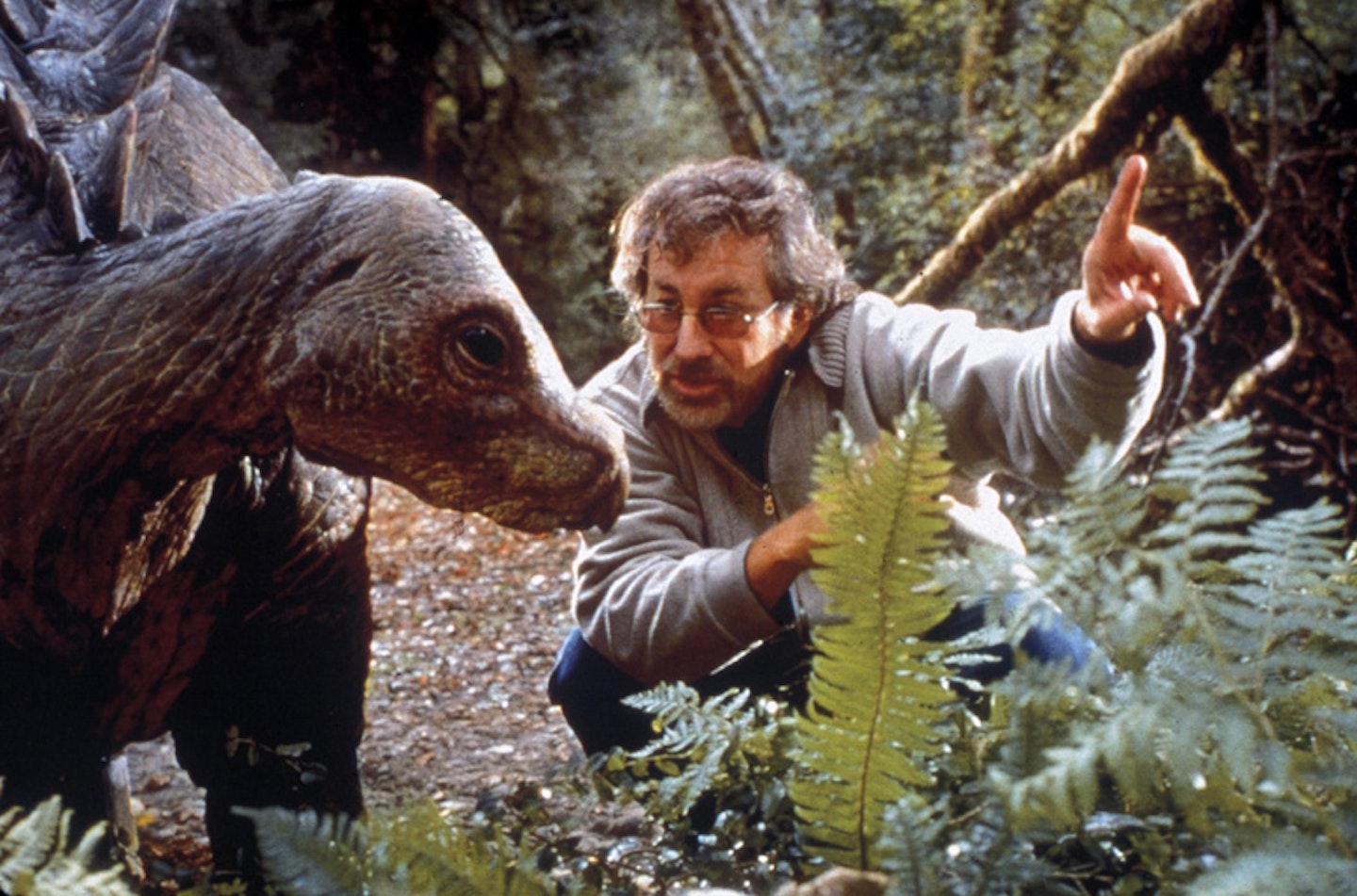
The Lost World’s baby stegosaurus, here attentively taking direction, was one uncanny example of the technological advances Spielberg presided over. Under the aegis of effects genius Stan Winston, the sequel’s mechanical ‘saurs had become far more advanced only fours years after Jurassic Park. This tyrannosaur toddler - called Claire off camera - had 45 points of movement.
Check out Empire's review of Jurassic Park: The Lost World here
Amistad (1997)
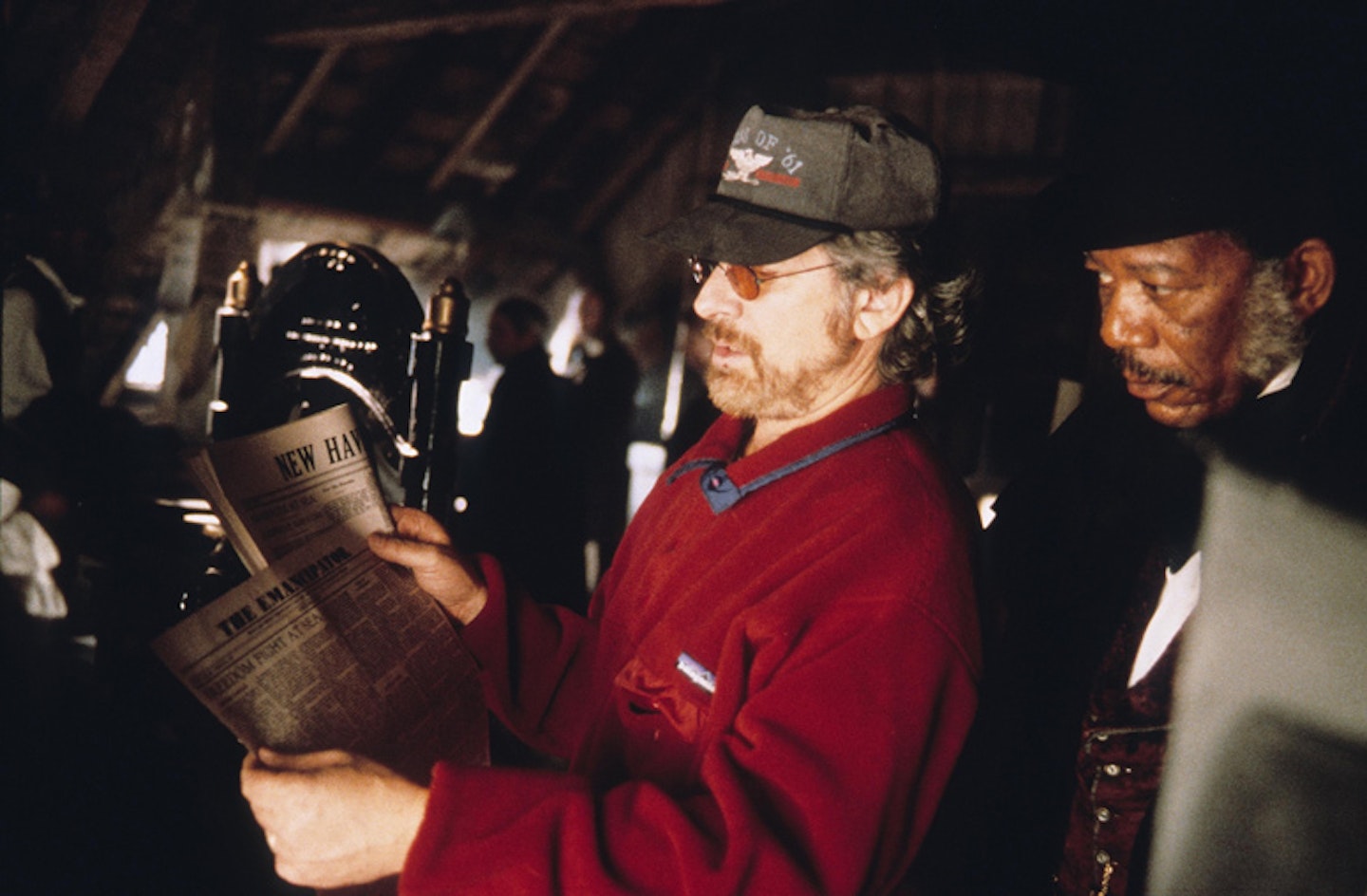
Here Spielberg catches up on 1839’s news with Morgan Freeman on the set of his true-life slave drama. Freeman, who’d reunite with Spielberg to narrate War Of The Worlds, was first to sign up as emancipator Theodore Joadson, one of the fictional characters in a largely true-life telling. The whole movie was in the can after a swift seven-week shoot in Rhode Island, Puerto Rico and Los Angeles. Freeman loved working with the director, an experience he approached as a fan as well as an actor. “When I saw Close Encounters,” he recalls, “my wife and I jumped into the car and drove out into the country where there were no lights so we could look up and see.”
Saving Private Ryan (1998)
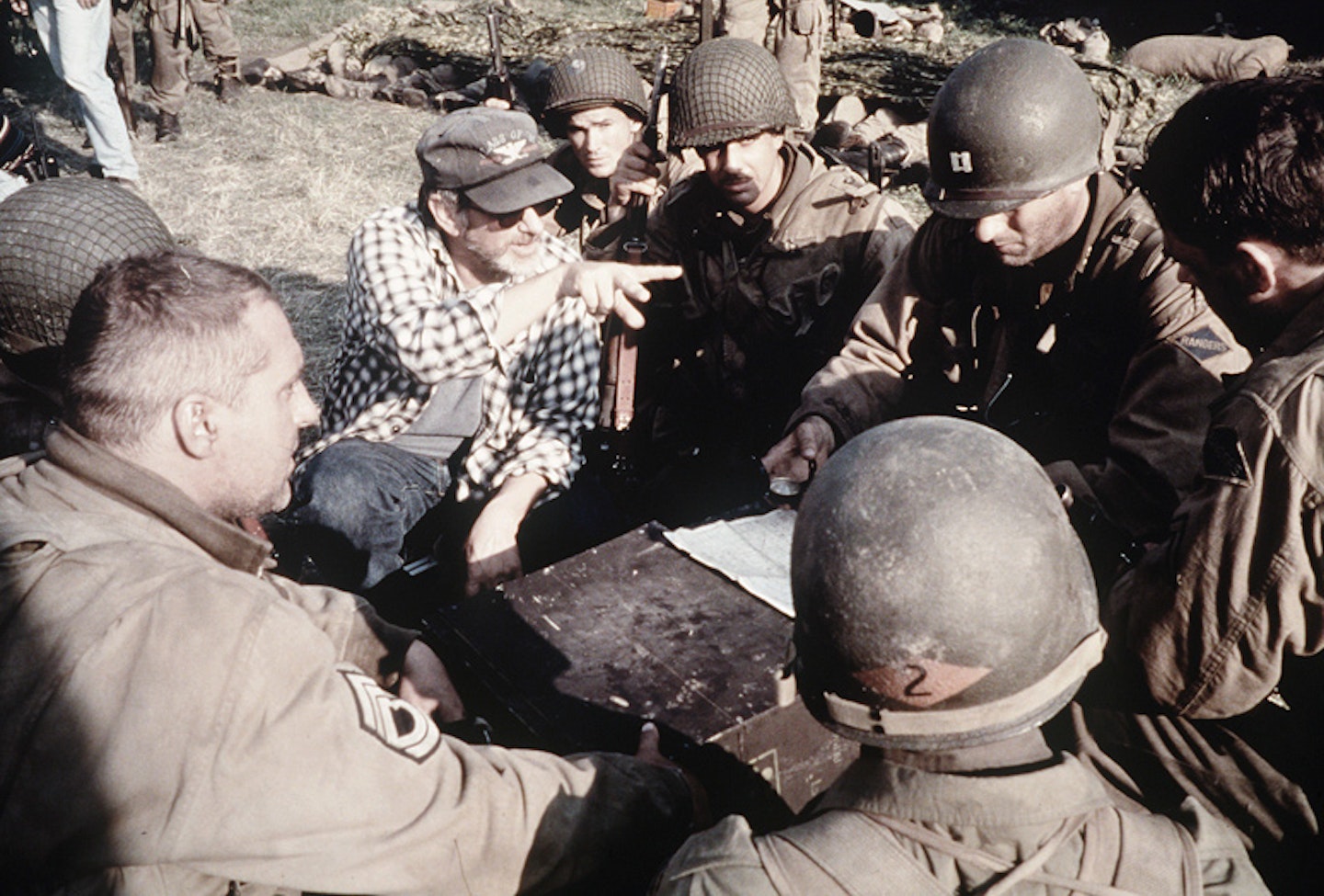
Shot in Ireland, Normandy, Oxfordshire, and, for its climactic battle, at the old British Aerospace factory in Hatfield, Saving Private Ryan came when Spielberg’s career was at its most frenetic. Emulating heroes like Michael Curtiz, John Ford and Howard Hawks, he raced from Lost World to Amistad to Private Ryan, in the process denying himself his usual prep and location scouting time. “In a sense that became a blessing in disguise,” he reflected, “because I’m actually much better when I hit the ground running than when I sit down angsting over a 1000 drawings.”
Minority Report (2002)
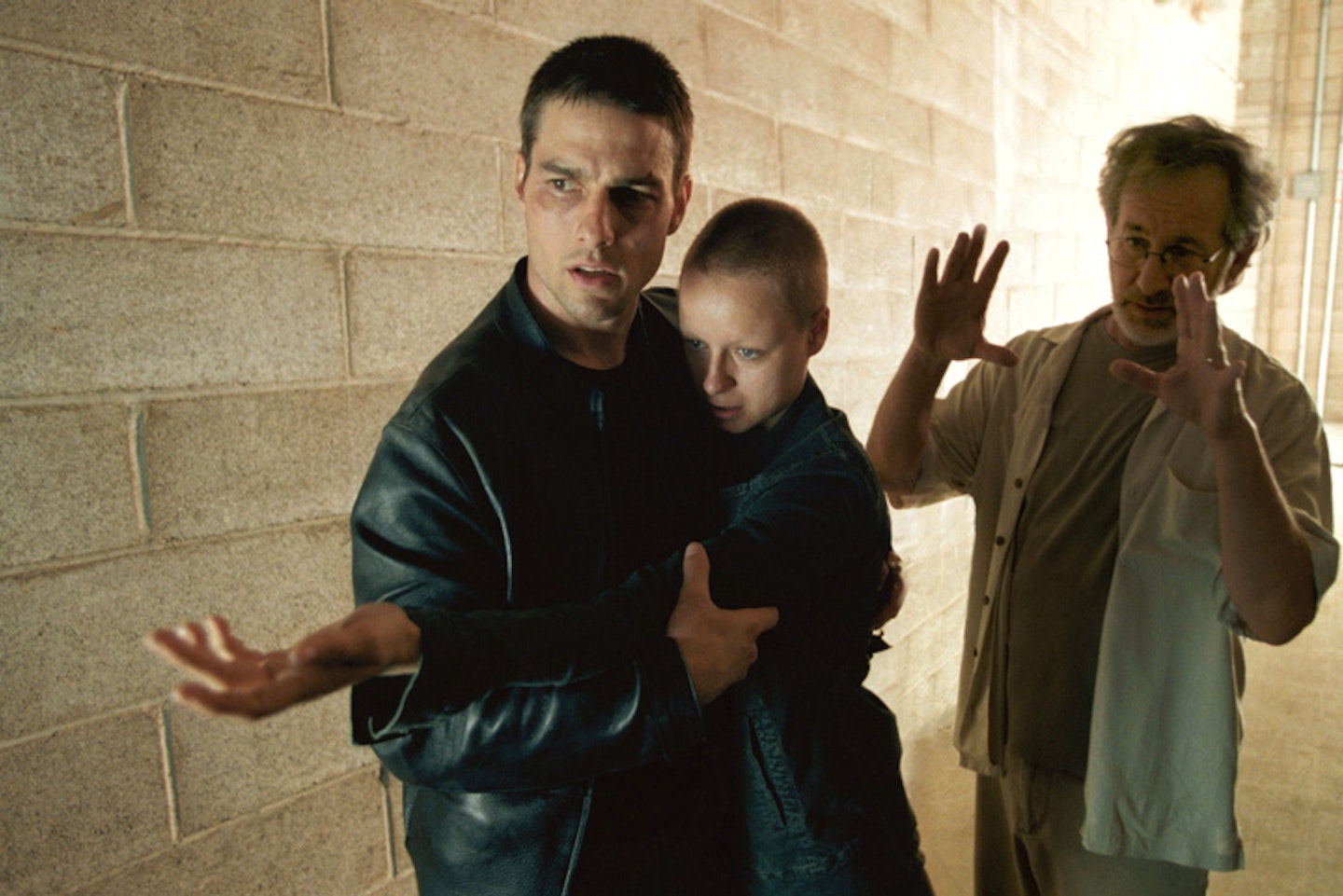
Spielberg frames a key moment from John Anderton (Tom Cruise) and Agatha’s (Samantha Morton) escape from Pre-Crime in his sci-fi noir. “I swear to you I discovered that shot through the viewfinder,” he later told Roger Ebert. “I had them hug and suddenly I saw it through the viewfinder and I asked Samantha to turn her head a little, for more profile, and I found this shot. I called Janusz Kaminski [the cinematographer] over and said, ‘Look at this thing! It's amazing!’ And it was just there. [John and Agatha] are basically at that point the same person. Two heads from one heart.”
War Of The Worlds (2005)
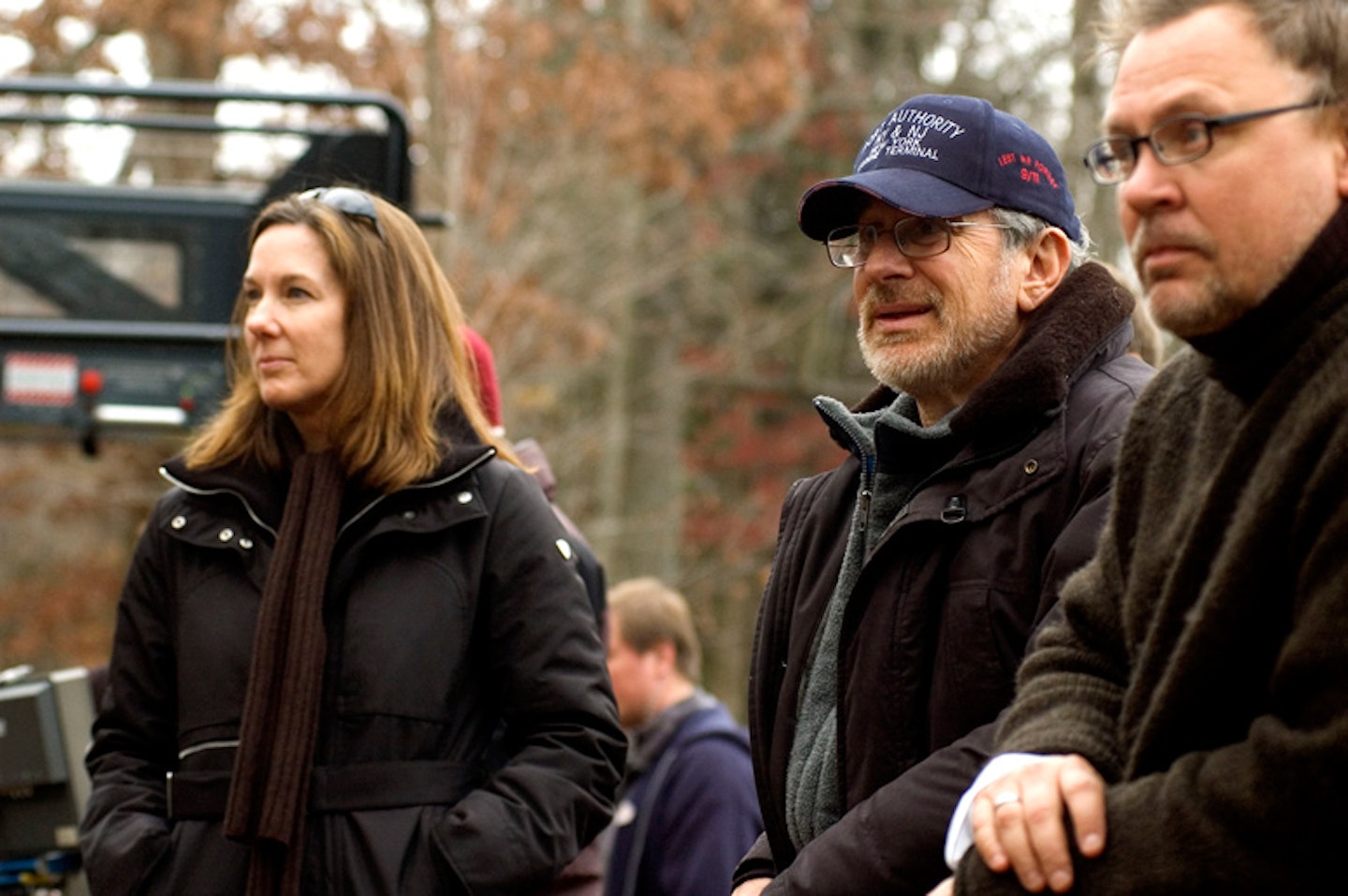
Famous for his signature headwear, Spielberg’s 9/11 baseball cap emblem here offers a reminder of what he had in mind for his take on H. G. Wells’ apocalyptic sci-fi yarn. “Our version comes at a time when Americans feel deeply vulnerable,” he told media during the film’s press campaign. Kathleen Kennedy (left), his producer since E.T., and now the cerebral cortex of the Star Wars brain trust, was originally Spielberg’s assistant. A terrible typist but a font of ideas, she got her break as co-producer on Tobe Hooper’s 1982 Poltergeist.
Munich (2005)
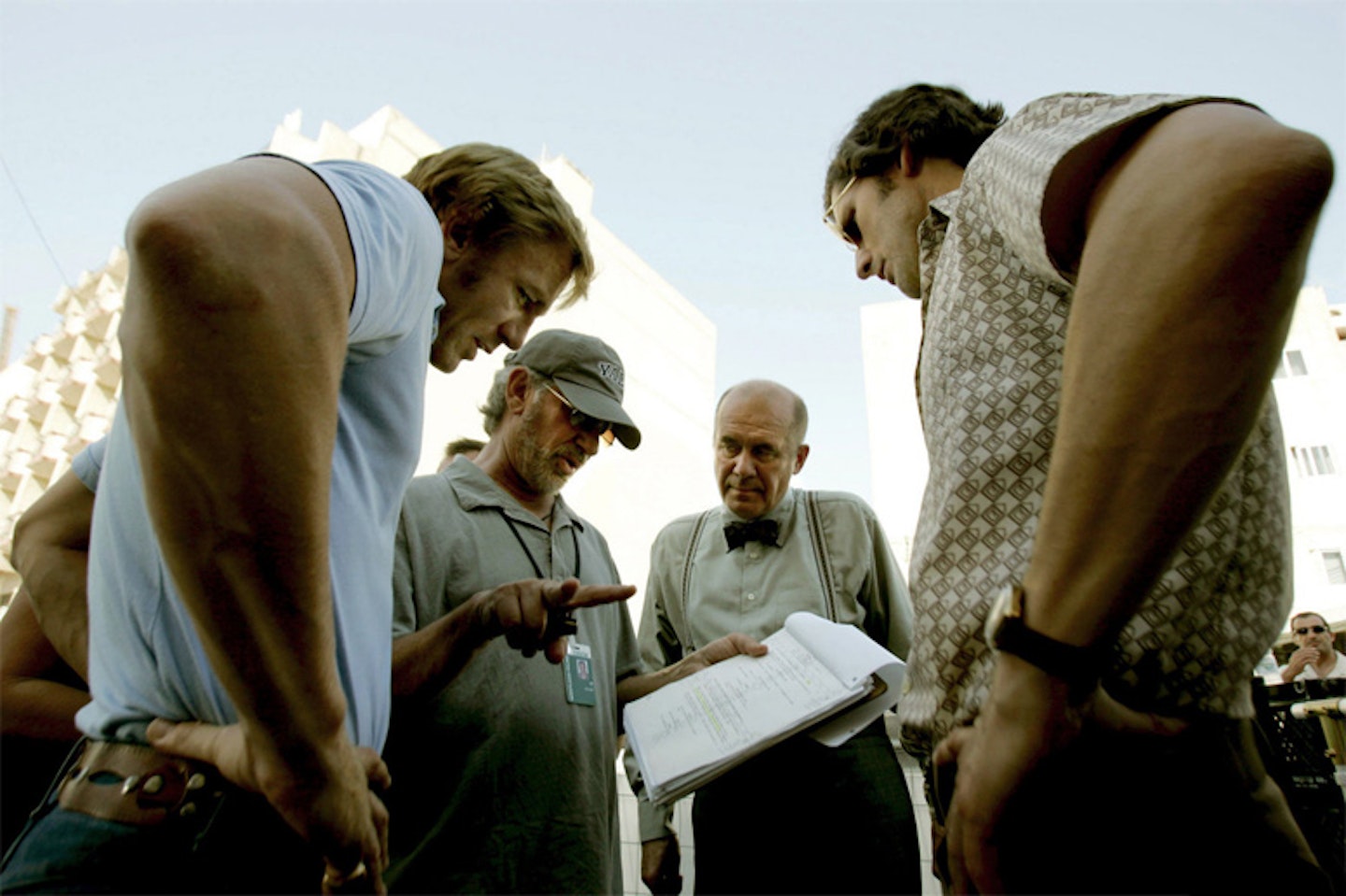
Shooting the bulk of his revenge thriller in Malta and Hungary, Spielberg raced the movie through production and into theatres with extraordinary speed to get it into the Oscar reckoning. With only six months between take one and theatrical release, the whole production was geared around a race-against-time ethos that suited the subject matter perfectly. Michael Kahn was editing footage and delivering scenes to the director within two days of them being shot, enabling Spielberg to parcel them out to John Williams and sound designer Ben Burtt to start work on almost immediately.
The Adventures Of Tintin: The Secret Of The Unicorn (2011)
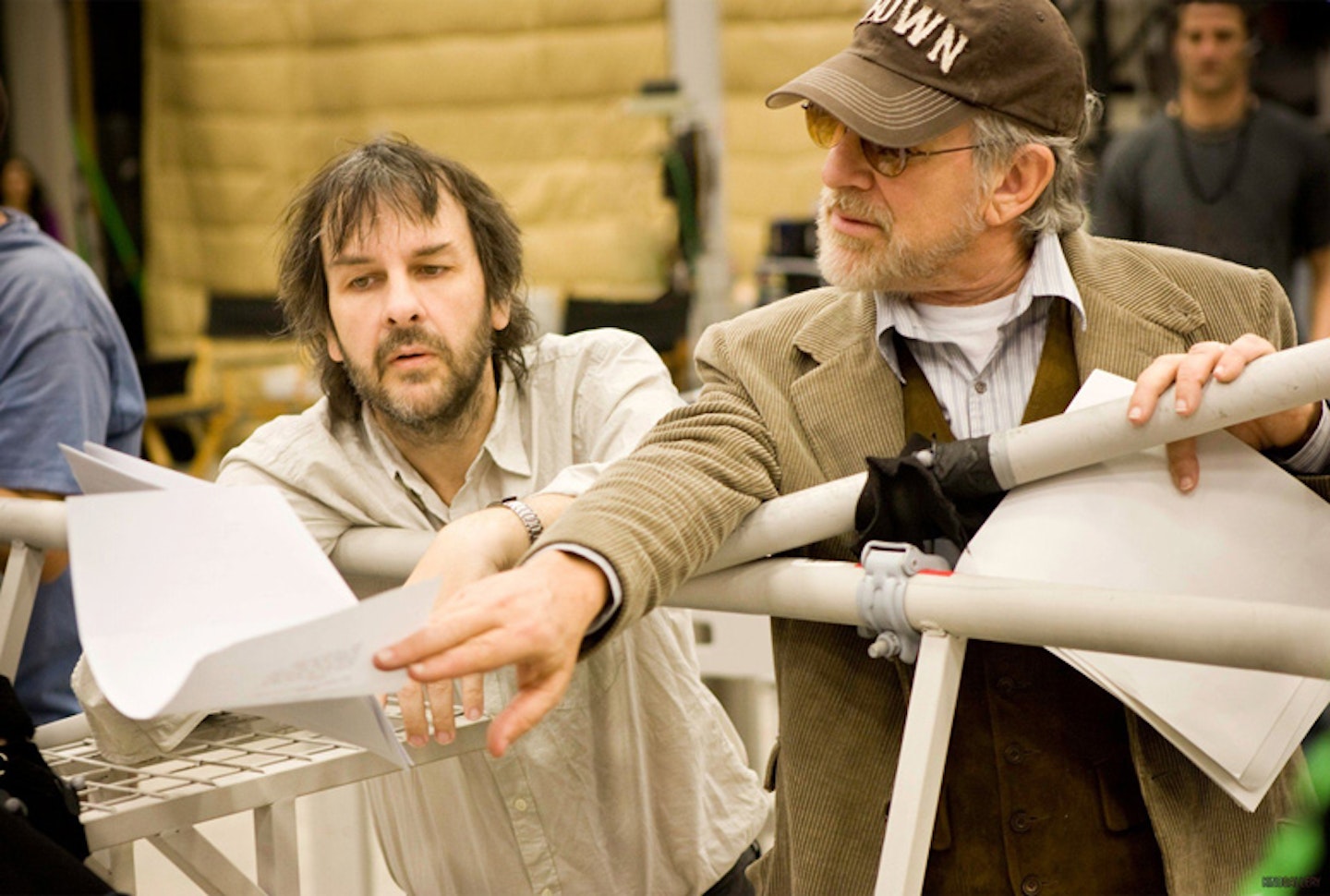
The world’s greatest Hergé fan club convenes for The Adventures Of Tintin. Spielberg, who discovered the boyish ‘tec after a French reviewer drew a parallel between Hergé’s stories and Raiders Of The Lost Ark, initially intended to make a live-action adaptation with a CG Snowy. Weta Digital was recruited to build the VFX canine, at which point Peter Jackson persuaded Spielberg that mo-cap was better suited to bringing Tintin to life. The idea of a Tintin movie had been germinating in Spielberg’s head since 1984, with Jack Nicholson his initial pick to play Captain Haddock.
Check out Empire's review of The Adventures Of Tintin: The Secret Of The Unicorn here
War Horse (2011)
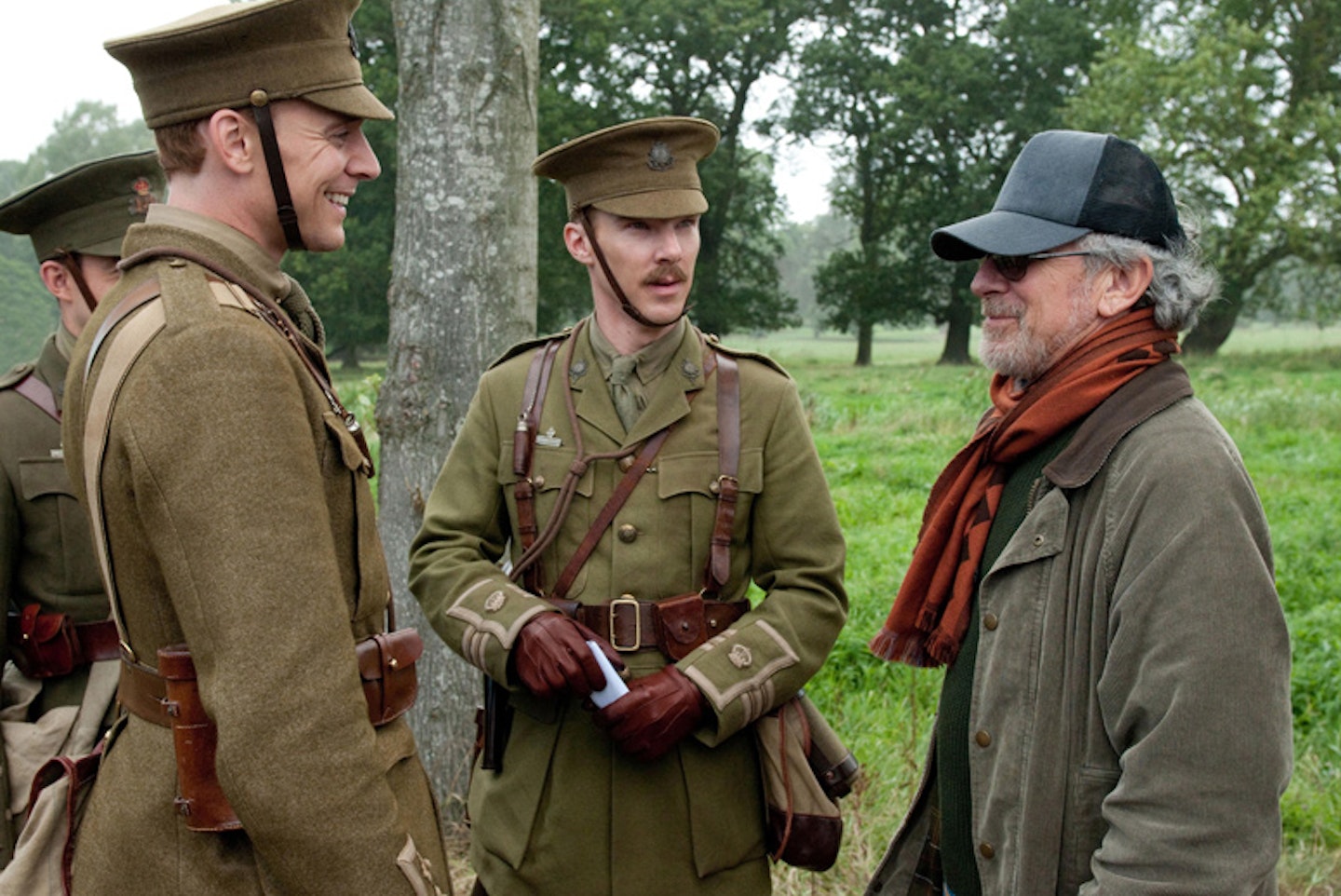
Steven Spielberg chats with Tom Hiddleston and Benedict Cumberbatch on the English set of War Horse. The initial greenlight for his adaption of Michael Morpurgo’s Great War novel came from an unlikely source. “[The play] made me cry, I loved it so much,” remembers Spielberg. “My daughter said, 'You have to make War Horse, and you have to make it for me’.”
Lincoln (2012)
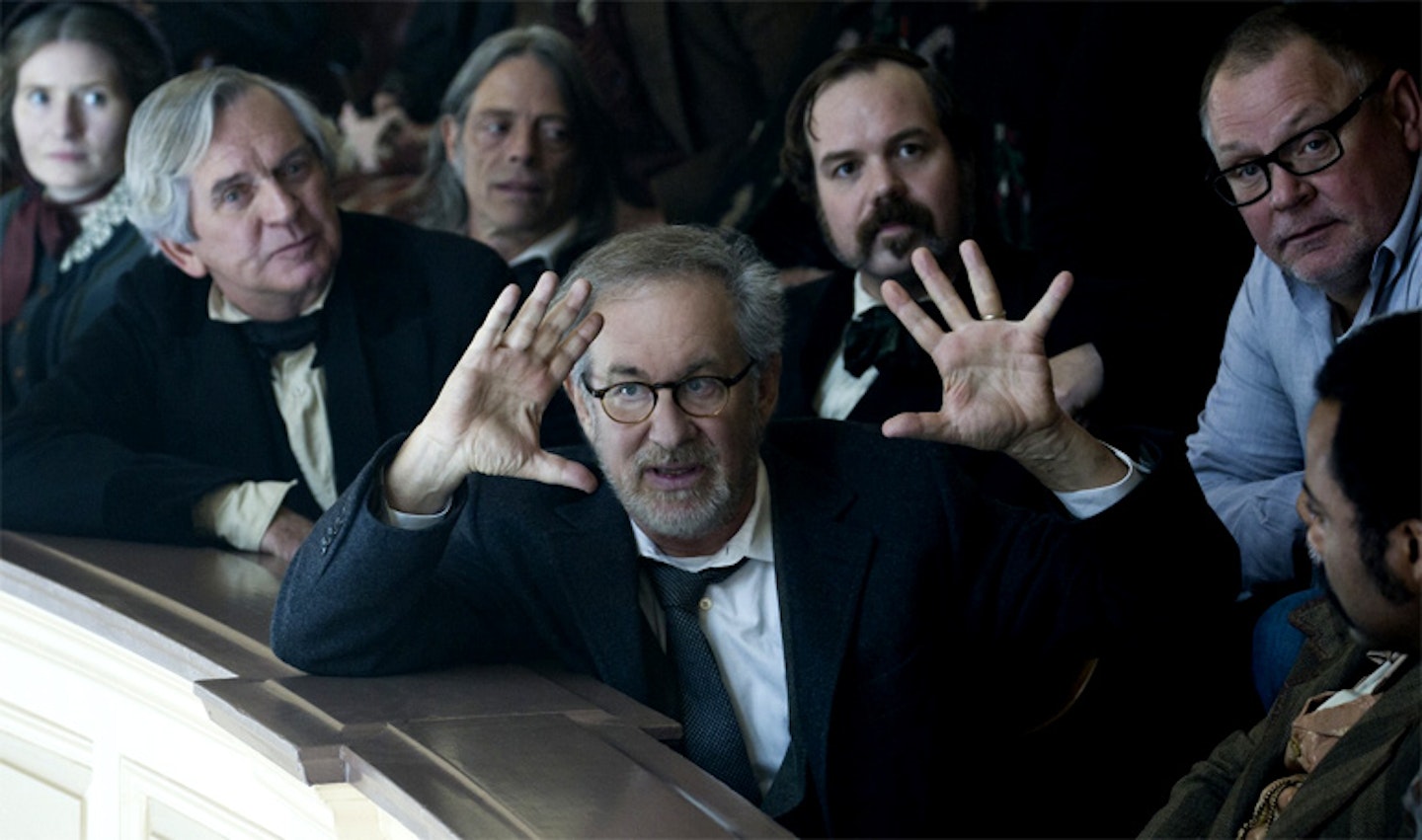
For his Oscar-garlanded biopic Spielberg forewent his usual baseball cap in favour of a suit and tie. “I think that I wanted to get into that role more than anybody else,” he reflected of his Abraham Lincoln collezione. “Because we were recreating a piece of history, I didn’t want to look like the schlubby, baseball-cap-wearing 21st-century guy. I wanted to be like the cast.” In keeping with his Method approach, he addressed the cast by their character name – Daniel Day-Lewis was known as “Mr. President” – throughout the 14-week shoot.
